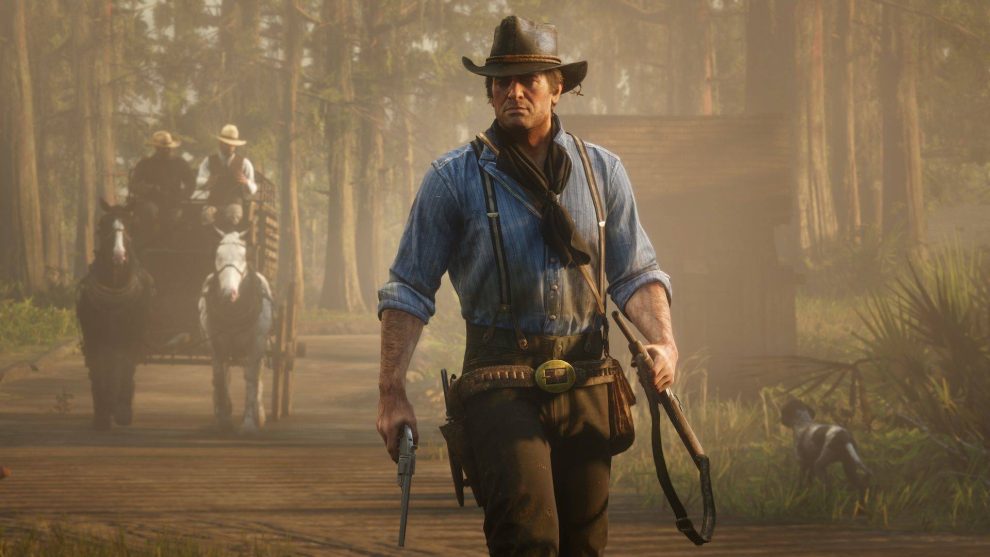The enchanting worlds and captivating narratives of single-player, story-driven games have captivated gamers for decades. From the pixelated heroes of early RPGs to the breathtaking visuals of modern titles, these experiences have offered a unique escape into meticulously crafted universes. However, in the ever-evolving landscape of the gaming industry, a question arises: Are story-driven single-player games on the verge of becoming relics of the past?
The Thriving World of Story-Focused Gaming
Before speculating on their downfall, we must acknowledge the undeniable flourishing of story-driven single-player games in recent years. Titles like The Last of Us Part II, God of War (2018), Red Dead Redemption 2, and Ghost of Tsushima have garnered critical acclaim and commercial success, proving the enduring appeal of well-crafted narratives. These games demonstrate the ability of this genre to push boundaries in storytelling, emotional impact, and character development.
The Rise of Multiplayer and “Games-as-a-Service”
However, the gaming landscape also presents countervailing trends. The rise of multiplayer experiences, fostered by advancements in online connectivity, has captured a significant portion of the market. Games like Fortnite, Apex Legends, and Call of Duty: Warzone offer continuous engagement, social interaction, and a sense of competition, appealing to a different set of player desires.
Furthermore, the “Games-as-a-Service” (GaaS) model, which emphasizes ongoing content updates and monetization strategies, has gained prominence. This model, often associated with multiplayer titles, can potentially conflict with the self-contained nature of single-player experiences.

Concerns Over Development Costs and Player Attention
These trends raise valid concerns about the future of story-driven single-player games:
- Development Costs: Creating high-quality, single-player narratives with intricate details and lengthy playtime can be expensive and time-consuming. This can be a barrier for smaller studios competing with larger companies who might prioritize GaaS titles with potentially higher profit margins.
- Competition for Player Attention: The sheer volume and variety of games available, coupled with the abundance of entertainment options outside of gaming, can make it harder for single-player experiences to capture and maintain player attention compared to the constant engagement loop of some multiplayer titles.
- Shifting Player Preferences: While the success of recent single-player games suggests continued interest, some argue that player preferences might be shifting, with gamers favoring the social interaction and long-term engagement offered by multiplayer experiences.
Reasons for Optimism About the Future
Despite these challenges, several factors suggest that story-driven single-player games are not destined for extinction:
- Enduring Demand: The critical and commercial success of recent single-player games demonstrates that a significant portion of the audience still values intricate narratives and immersive experiences. These successes show that there is a dedicated market for these titles.
- Innovation and Experimentation: Developers are continuously finding creative ways to tell stories, pushing boundaries with innovative gameplay mechanics, branching narratives, and character choices. Games like What Remains of Edith Finch and Firewatch showcase the potential for unique storytelling experiences within the single-player domain.
- Focus on Quality and Niche Markets: Studios are increasingly focusing on creating high-quality, niche experiences that cater to specific player preferences. This allows them to compete effectively without solely relying on large-scale multiplayer features. Additionally, subscription services like Xbox Game Pass offer players access to a diverse library, including single-player titles, potentially mitigating the financial barrier for some gamers.
Coexistence With Multiplayer
The future of gaming likely lies in a coexistence of different genres, with story-driven single-player titles continuing to thrive alongside the ever-evolving world of multiplayer experiences.
Instead of viewing these different game styles as competitors, it’s important to recognize that they cater to diverse player preferences and offer unique experiences.
In Summary
By providing compelling narratives, innovative gameplay mechanics, and engaging worlds, story-driven single-player games can continue to hold a place in the hearts of gamers for years to come.
The landscape of the gaming industry is constantly evolving, and the future of this genre remains uncertain. However, despite facing competition from multiplayer titles, story-focused solo adventures demonstrate enduring mainstream appeal and potential for creativity.
For those who value losing themselves in rich, cinematic stories over social interaction or service-based models, these experiences aren’t fading melodies – they are epic gaming symphonies built to stand the test of time.
















Add Comment